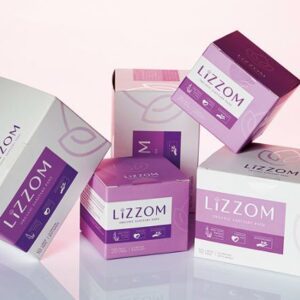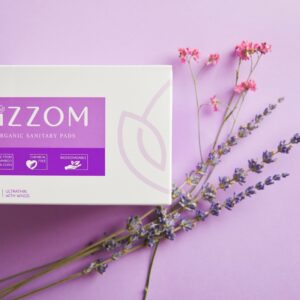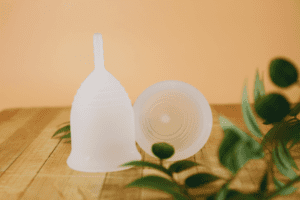What are Menstrual Cups and why are They Growing in Popularity?


In 2017 it was estimated that, globally, there were 1.9 billion women of menstruating age. Whilst menstruation is entirely normal and actually a sign of good reproductive health, discussing it has traditionally been something of a taboo. For some women, it remains a matter of privacy, something to accept as inevitable, but not draw attention to. For others though, times are changing; they are embracing an era where talking about the ups and downs of periods is the social norm. Alongside this comes a willingness and desire to discuss the different sanitary product options; to open our minds to the availability of pad and tampon alternatives and one of these is the menstrual cup.
What is the menstrual cup?
The menstrual cup is a flexible device that is inserted into the vagina to collect menstrual blood. There are two types, a bell shaped version, that sits lower in the vagina and a flatter version that sits higher up, at the base of the cervix. The menstrual cup holds between 10 and 38ml of blood and will require emptying every 4 to 12 hours depending on how heavy menstrual flow is. It is usually made of medical-grade silicone, rubber, latex or elastomer.
How does it compare to pads and tampons?
One large meta-analysis explored the use, leakage, acceptability, safety and availability of menstrual cups. This analysis compared 43 studies, involving 3319 participants. Key findings were:
- The risk of leakage with menstrual cups was similar or less than the risk or leakage with disposable pads and tampons.
- Menstrual cups do not cause physical harm to the cervix or vagina. Incorrect positioning of the cup may cause discomfort or pain.
- There is no increased risk of infection with menstrual cups compared with other sanitary products. However, there is little evidence to support the idea that the suction seal that is formed, reduces the growth of bacterial species.
- The risk of Toxic Shock Syndrome (TSS) is low.
Why the change in public opinion?
Surprisingly, menstrual cups have been in existence since the 1930s; yet only in the last 5 years or so have they really started growing in popularity. Why is this? Well, there are a number of reasons today’s women give for making the switch, and these include:
- Cost. Menstruating can be an expensive process. Data from the US suggests that the average woman spends between $50 and $150 per year on sanitary items. In contrast, with its ten year lifespan, the menstrual cup represents a significant financial saving. Most simply involve an initial outlay of $20 to $40.
- Durability. The cup holds more than either a pad or a tampon, meaning it needs changing/emptying less often.
- Environmentally-friendly. With the same menstrual cup lasting for up to ten years, it produces none of the additional landfill that disposable products contribute so heavily to.
- Chemical free. Made from hypo-allergenic materials, adverse reactions to the cup are rare. Unlike tampons, there is no risk of fibres being left in the vagina and, to date, there is no association between the menstrual cup and TSS.
- Suitable for use by the majority of menstruating women. Menstrual cups are available in different sizes, meaning they can be used by those with a heavy flow and those with a light flow. They can also be used pre- and post-childbirth. The only women who might struggle to use one are those with an abnormally shaped or positioned uterus.
Are there any drawbacks?
The major issues that women have with the menstrual cup are that it can be messy to empty and it requires a certain amount of looking after. Most manufacturers recommend sterilising the cup between periods, which some women may find an inconvenience.
In addition to this, some women find they need a period of time to familiarise themselves with the menstrual cup and it can take training and practice to really get comfortable with using it.
Menstrual cups: a case example in Ugandan Refugee settlements
The benefits of menstrual cups may well extend far beyond what those of us living in the developed world see. Thousands of women and girls living in refugee camps around the world do not have access to clean water and reasonable sanitation facilities. They are unable to manage their menstrual health with safety or with dignity. Unhygienic conditions mean that infection risk is high and a lack of knowledge on the topic of menstrual health, allows misconceptions and misinformation to spread widely. Health, education and quality of life all suffer as a result.
Globally, UN agencies and women’s protection organisations want to change this. They want to remove the stigma that surrounds menstruation and provide the resources and information women need to manage their own menstrual health. One such project that was set up to help refugees in Uganda by the WoMena Uganda and Public Health Ambassadors of the region was the menstrual cup pilot intervention study.
The project had two aims:
- Provide comprehensive menstrual health education, not only to female members of the settlement, but to males as well. Males were included in the hope that this would lessen the stigma associated with menstruation and that they could provide support to female members of the community.
- Increase acceptability towards the use of menstrual cups, with the idea of improving overall menstrual health for females in the region.
Clearly, in a region such as this, consideration had to be given to the specifics of the menstrual cup being handed out. The free access to clean water that so many of us take for granted is not a given in many refugee settlements. The BFree menstrual cup is an innovative product that does not require water to wash or boil for sterilisation between cycles. As such, it is suitable for use in a humanitarian and low-income context.
As a pilot study there were, naturally, lessons to be learnt. However, the overall outcome was positive. By the end of the pilot study, 91% of surveyed participants were still using their menstrual cups consistently. They reported reduced leaking and improved self-confidence. School aged girls were less embarrassed and their attendance at school increased.
Further promotion of and training in the use of menstrual cups globally, could potentially have a huge impact on the quality of life and menstrual health of many, many women around the world. With advances in modern technology, menstrual cups have become a resource for women from all walks of life and, as such, projects such as the one described above need to be more widely implemented.
Nabta is reshaping women’s healthcare. We support women with their personal health journeys, from everyday wellbeing to the uniquely female experiences of fertility, pregnancy, and menopause.
Get in touch if you have any questions about this article or any aspect of women’s health. We’re here for you.
Sources:
- Eijk, Anna Maria Van, et al. “Menstrual Cup Use, Leakage, Acceptability, Safety, and Availability: a Systematic Review and Meta-Analysis.” The Lancet Public Health, vol. 4, no. 8, 1 Aug. 2019, pp. E376–E393., doi:10.1016/s2468-2667(19)30111-2.
- “Menstrual Cups vs. Tampons: Things You Might Not Know.” Mayo Clinic, Mayo Foundation for Medical Education and Research, newsnetwork.mayoclinic.org/discussion/menstrual-cups-vs-tampons-things-you-might-not-know-about-the-cup/.
- “What Can You Tell Me about the Menstrual Cup?” Mayo Clinic, Mayo Foundation for Medical Education and Research, 28 Feb. 2020, www.mayoclinic.org/healthy-lifestyle/womens-health/expert-answers/menstrual-cup/faq-20058249.
- WoMena. MENSTRUAL CUP PILOT INTERVENTION IN ADJUMANI DISTRICT UGANDA. 2020, womena.dk/wp-content/uploads/2020/05/Bfree-Pilot-Intervention-Report-April-2020.pdf.













































